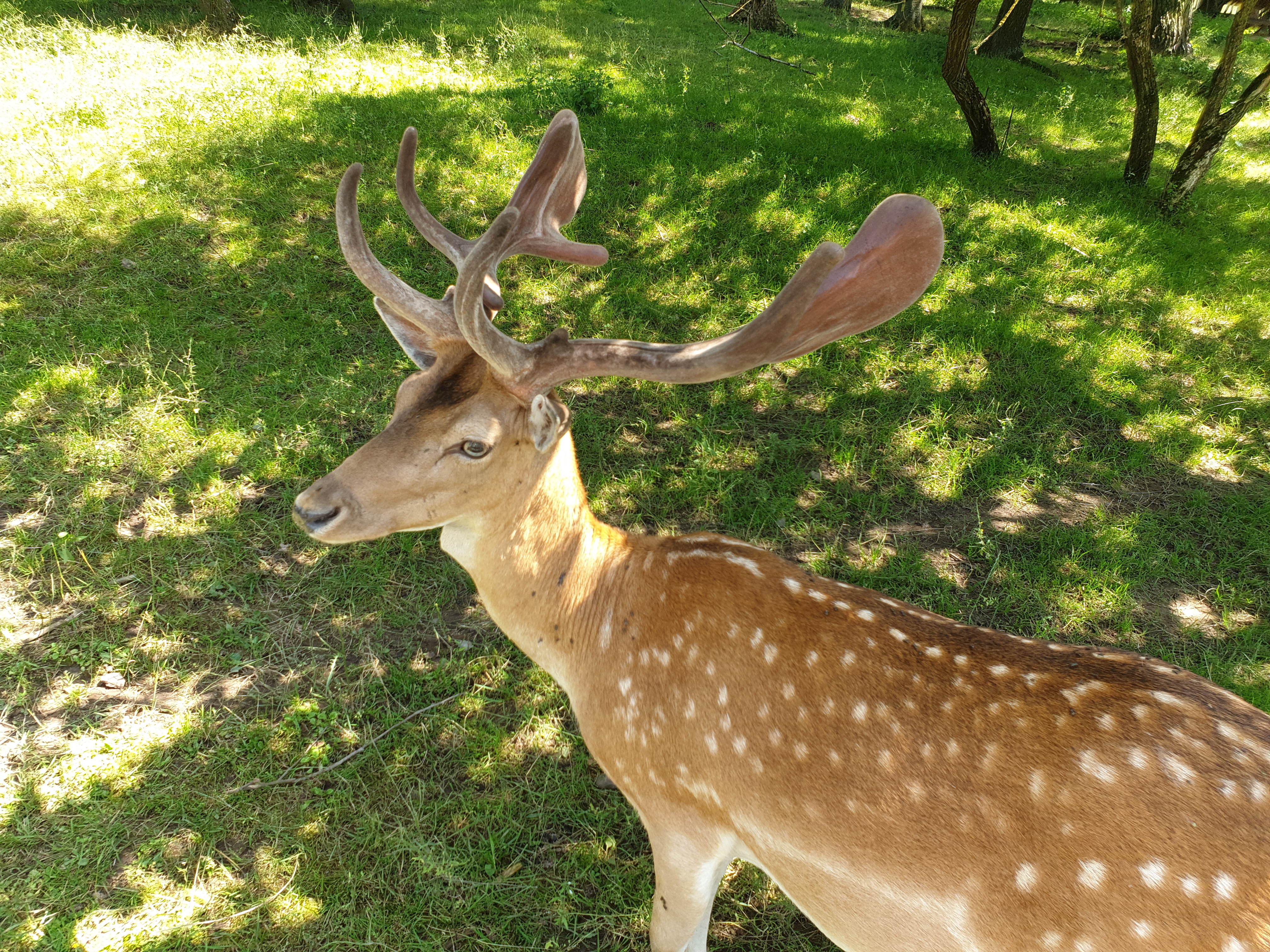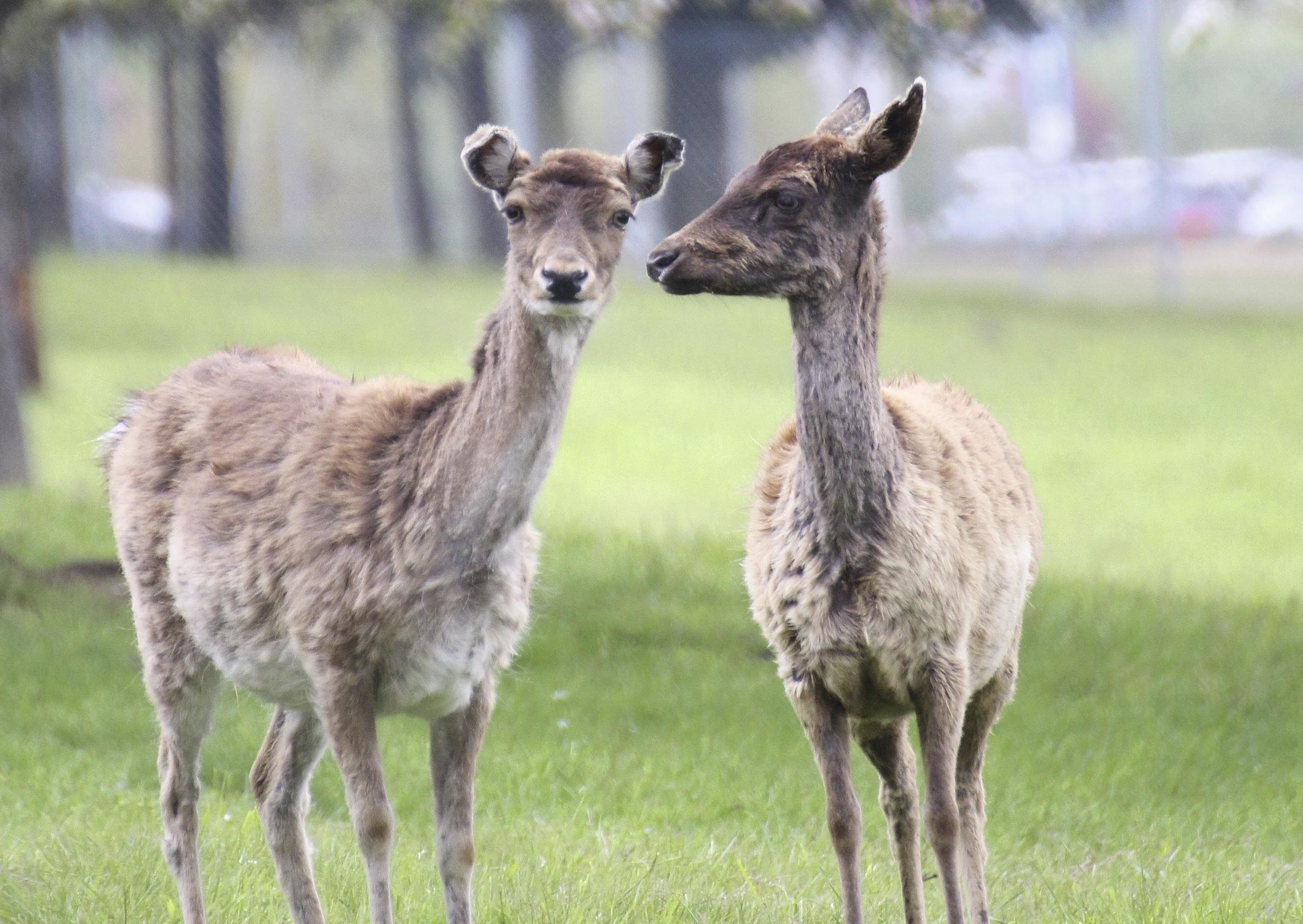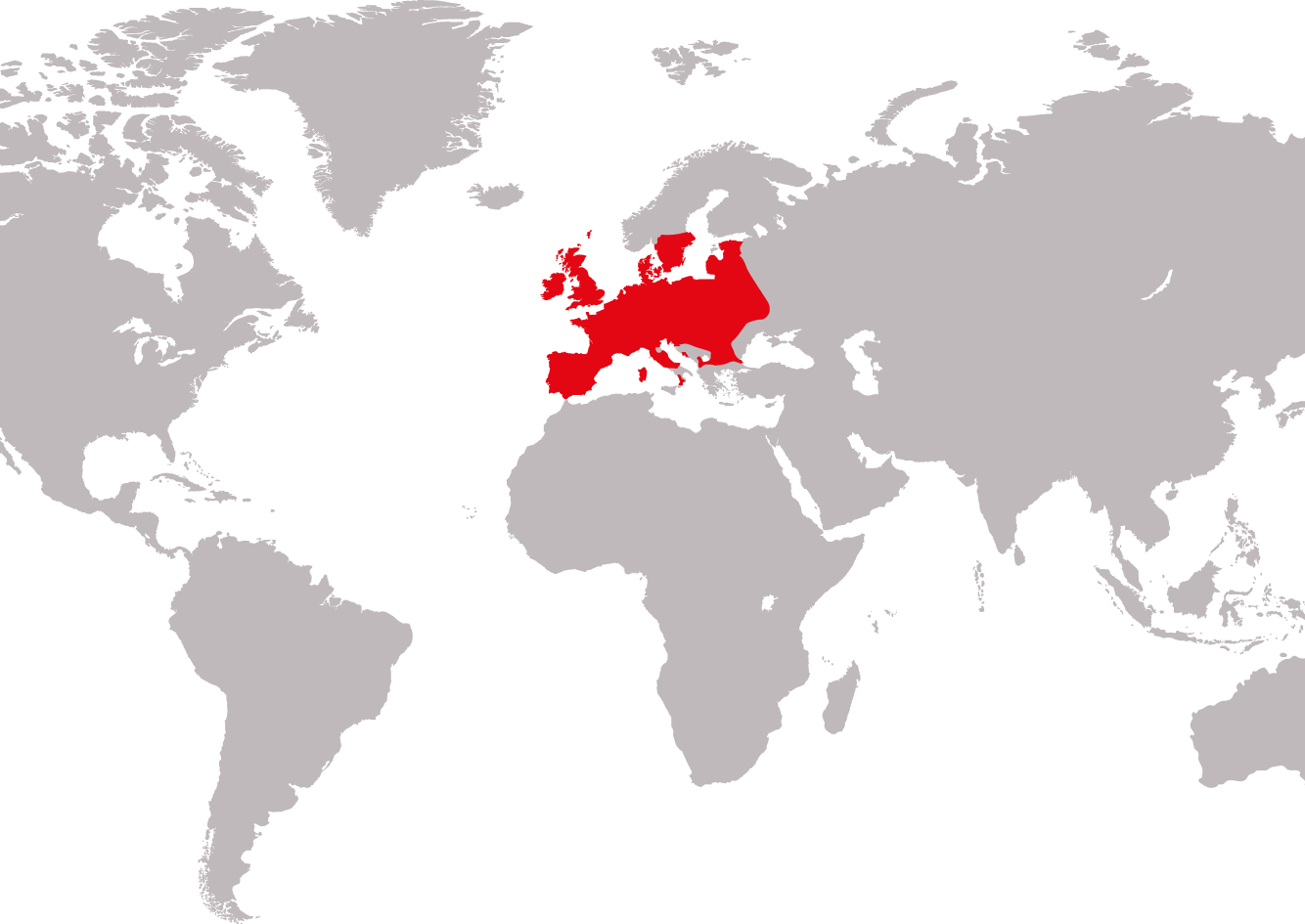Integrated signposts
Fallow deer, also known as fallow deer in hunting parlance, live in deciduous and mixed forests with plenty of cover, which are interspersed with clearings and open spaces.
With a shoulder height of 80-100cm, fallow deer are significantly smaller than red deer, which reach a shoulder height of up to 150cm. Furthermore, with a weight of up to 250kg, red deer are also considerably heavier than fallow deer, which only weigh up to 80kg.
Fallow deer have a summer and a winter coat, so the characteristic white spots are clearly recognisable in summer.
In the wild, fallow deer live in herds of females or males. The female herds have a strict hierarchy and are led by an old female. During the rutting season, so-called rutting packs are formed, which consist of several females and one male. The male has a strongly protruding larynx, with which he produces widely audible rutting calls during the rutting season.
When fallow deer are on the run, the tail is stretched upwards with the white underside and the white mirror hairs are ruffled. This is a visual signal to ensure that they do not lose contact with their rapidly fleeing conspecifics.
The diet of these ruminants includes grasses, herbs and shoots as well as mosses and lichens.


